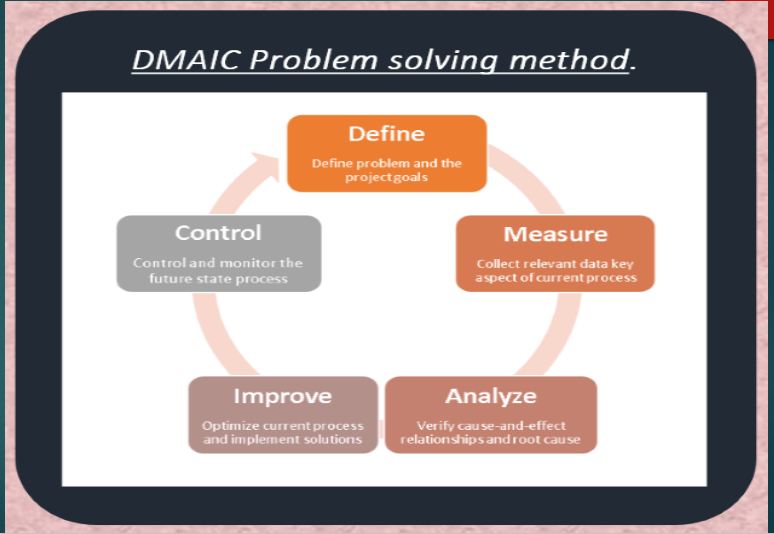
Six Sigma at many organizations simply means a measure of quality that strives for near perfection.
Six Sigma is a disciplined, data-driven approach and methodology for eliminating defects (driving towards six standard deviations between the mean and the nearest specification limit) in any process-from manufacturing to transactional and from product to service.
Six Sigma strategies seek to improve the quality of the output of a process by identifying and removing the causes of defects and minimizing variability in manufacturing and business processes. It uses a set of quality management methods, mainly empirical, statistical methods, and creates a special infrastructure of people within the organization who are experts in these methods
Six Sigma doctrine asserts:
- Continuous efforts to achieve stable and predictable process results (e.g. by reducing process variation) are of vital importance to business success.
- Manufacturing and business processes have characteristics that can be defined, measured, analyzed, improved, and controlled.
- Achieving sustained quality improvement requires commitment from the entire organization, particularly from top-level management.
Features that set Six Sigma apart from previous quality-improvement initiatives include:
- A clear focus on achieving measurable and quantifiable financial returns from any Six Sigma project.
- An increased emphasis on strong and passionate management leadership and support.
- A clear commitment to making decisions on the basis of verifiable data and statistical methods, rather than assumptions and guesswork
The Six Sigma DMAIC process (Define, Measure, Analyze, Improve, Control) is an improvement system for existing processes falling below specification and looking for incremental improvement.
DEFINE:
- Define the problem
- Define the project goal
MEASURE:
- Define project scope
- Select output characteristics (Y’s)
- Assess performance specifications
- Validate the measurement system
- Establish initial capability(Y’s)
ANALYZE:
- Define performance objectives
- Documents potentials (X’s)
- Analyze sources of variability
IMPROVE:
- Screen potential causes
- Identify appropriating conditions
CONTROL:
- Determine process capability for (X’s)
- Implement process controls
- Document what you have learned.
Thank you
You can see more of our quality management training materials that will add more to your professional experience in the below link: https://www.hermonqualitysolutions.com/training-modules-2/
